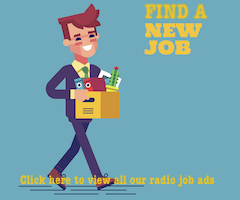Super Hi-Fi, an artificial intelligence powered audio platform that strives to create engaging digital music listening experiences, has signed an agreement with Octave Group, a leading provider of music and branded entertainment experiences in retail, bars, and restaurants.
The agreement will enable Octave Group, including PlayNetwork and TouchTunes, to offer selected Super Hi-Fi music technology in a fully integrated solution for in-store radio clients.
Co-founder and CEO Super Hi-Fi Zack Zalon (pictured) says: “Octave Group’s focus on creating meaningful, emotional connections with music for brands strongly aligns with our mission to build next generation listening experiences. We are excited for the relationship with Octave Group and the opportunity it presents us to help significantly improve the overall retail music experience.
In addition, Super Hi-Fi offers a wide range of capabilities including perfect song transitions, dynamic insertion of audio ads and promotional content, sonic branding, interstitials, audio news and podcast snippets, all perfectly stitched together for a high quality, fully produced result.
“Our singular purpose at Super Hi-Fi is to help digital music providers deliver better experiences to their customers,” says Zalon. “We are truly looking forward to working together with Octave Group and collectively delivering on that purpose.”
radioinfo asked Zack for some more details about this system, and he told us: “Super Hi-Fis platform was built from the ground-up as an AI that has the same skills as a seasoned on-air DJ.
“We were very influenced by radio techniques as storytelling devices. Think of the difference between a great broadcast radio experience with personalities, artist interviews, sonic branding… everything that makes radio great. Now compare that to streaming music services with songs, then giant gaps of silence, then more songs.
“No branding, no story to the experience. We just knew there was a better way, a way in which streaming music services could embed some of the tools of radio to up-level their products for consumers.
“Super Hi-Fi was built to support that. The AI was engineered to make real-time decisions about how to present content in an extremely high quality, entertaining way. All of the songs segue perfectly, as though a DJ is blending things live in a studio. Sonic branding, personalities, artist interviews, even advertising, is all properly positioned so it sounds totally produced. But it’s not, it’s actually our technology making these choices uniquely for each listener at lightning speed. That’s how Super Hi-Fi’s AI works.”
So is it similar to radio music scheduling software?
“The end result is similar from a sound presentation standpoint, but the method to get there is totally different. Radio scheduling software is great for a single broadcast stream, where humans help set the segue points, make decisions about what sonic element goes in what spot, and then broadcast the same stream out to a group of listeners. Super Hi-Fi was designed for a different paradigm, where there are millions of listeners and millions of unique streams.
“There’s no human intervention with Super Hi-Fi; we don’t have to set a single segue point manually; the elements are selected and positioned in real-time; and the output is fully interactive, so services can support song skipping and other modern functions. The best example is our scale. We currently generate over 1 billion AI ‘decisions’ every month. That would be the equivalent of powering over 130,000 broadcast radio stations simultaneously, 24/7. Radio scheduling and automation software just wasn’t built for that particular use-case.”
What do you mean by artist voice effects? Is it like voice tracking, or something else?
“Super Hi-Fi understands voices with the same depth as it comprehends music. It is able to make really interesting and entertaining decisions about how to use voices to build great listening experiences. As an example, the AI can layer voices over music, to provide some service branding the way a live DJ would in a studio. Or it could layer in an artist interview to deliver some context around music that is playing. Anywhere a voice would make sense to use, the system is able to support it… We use real voices, all pre-recorded. I imagine that in theory we could use synthesized voices, but it would most likely sound too artificial to be useable right now.”
Subscribe to the radioinfo daily flash briefing podcast on these platforms: Acast, Apple iTunes Podcasts, Podtail, Spotify, Google Podcasts, TuneIn, or wherever you get your podcasts.



